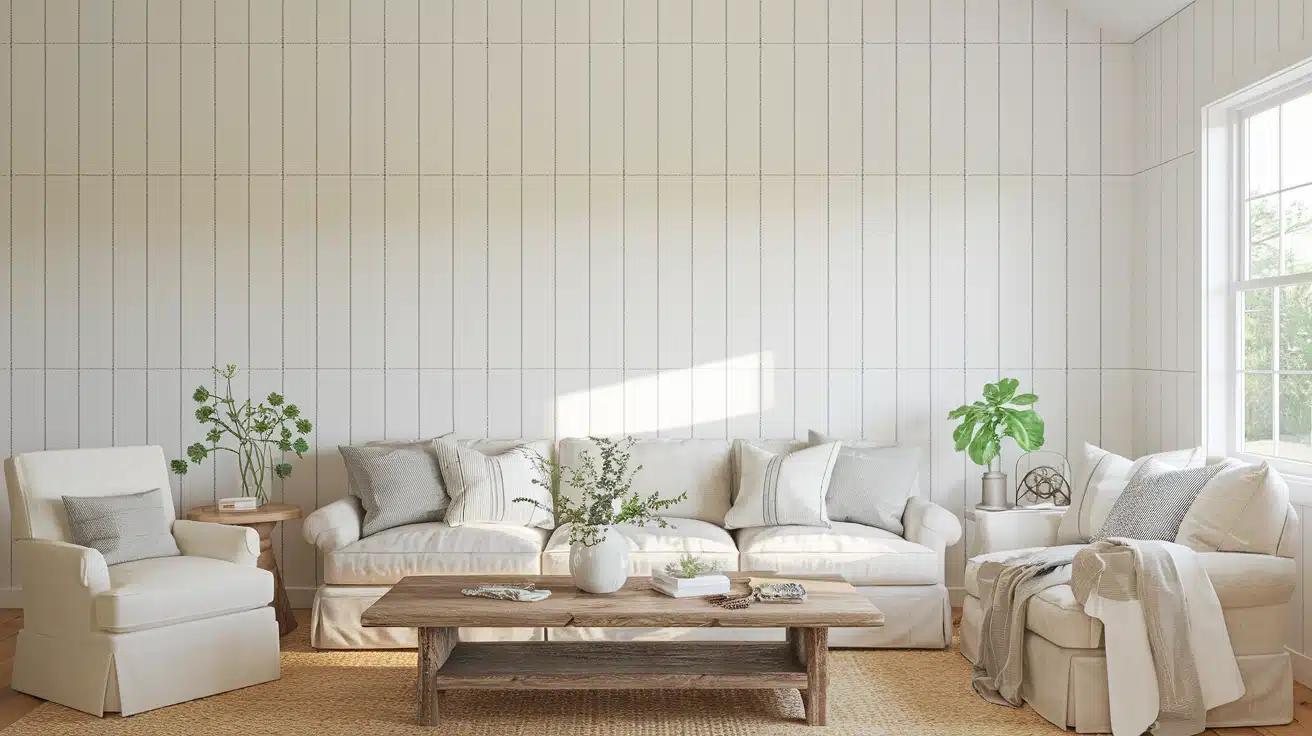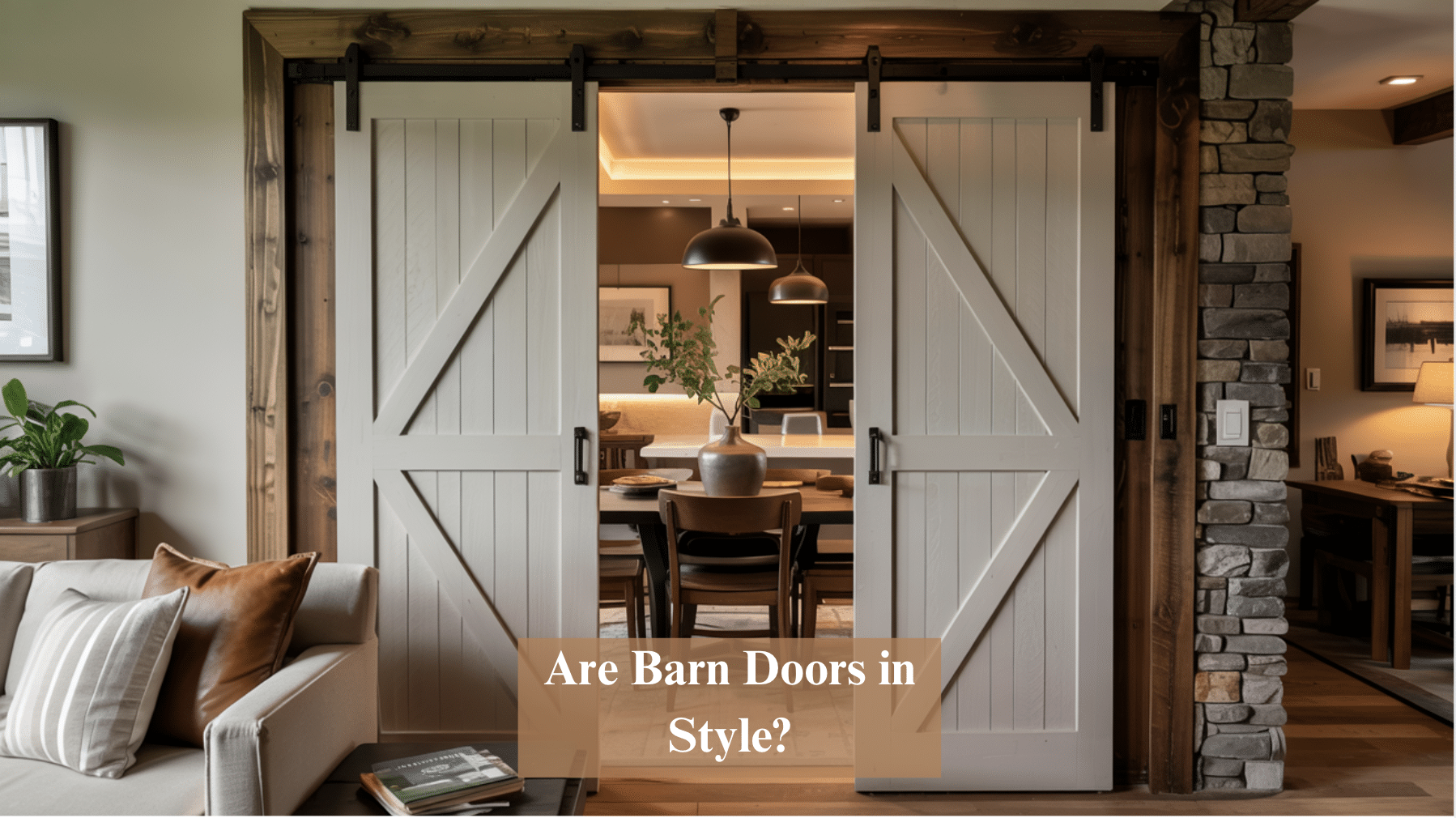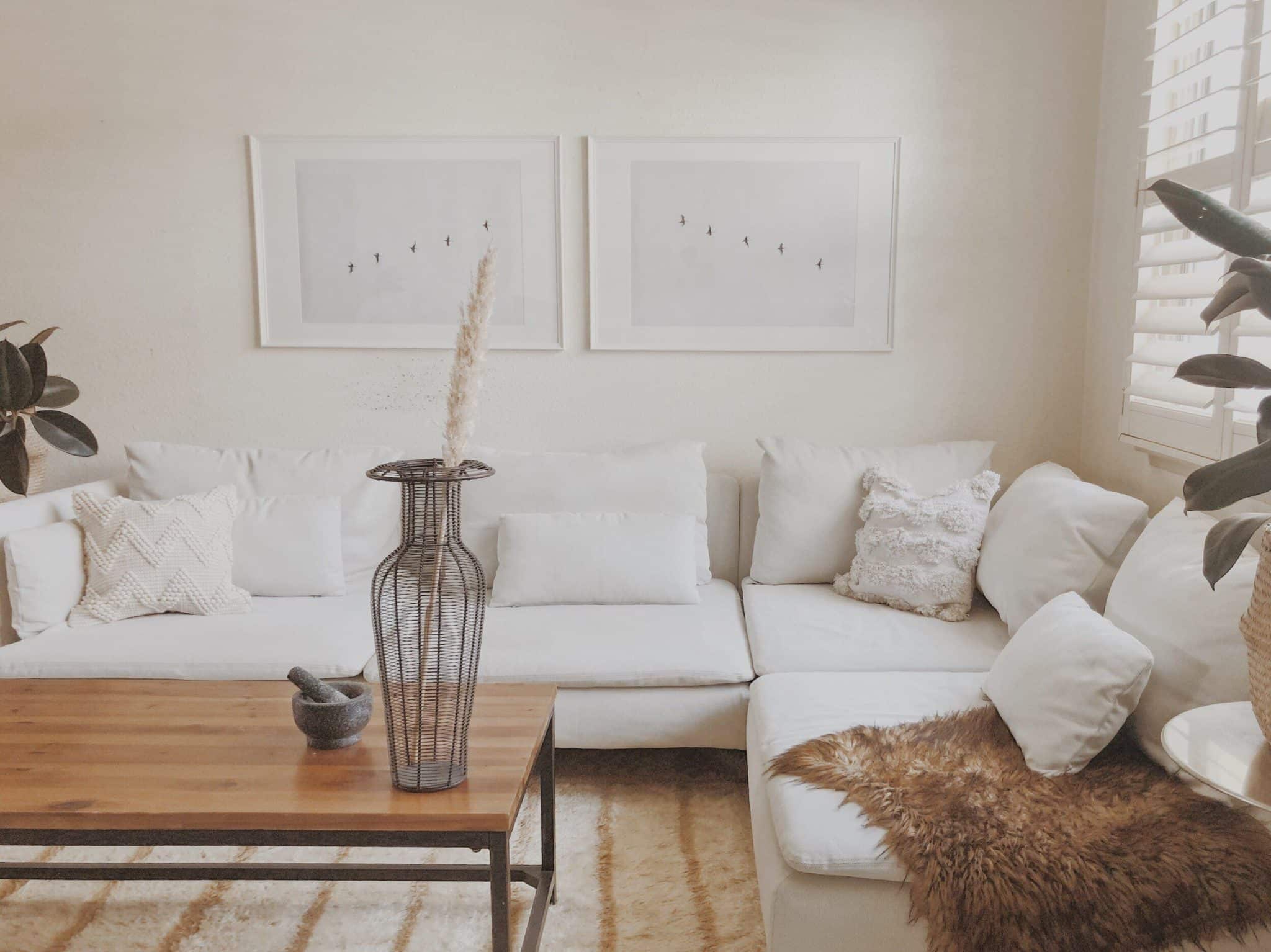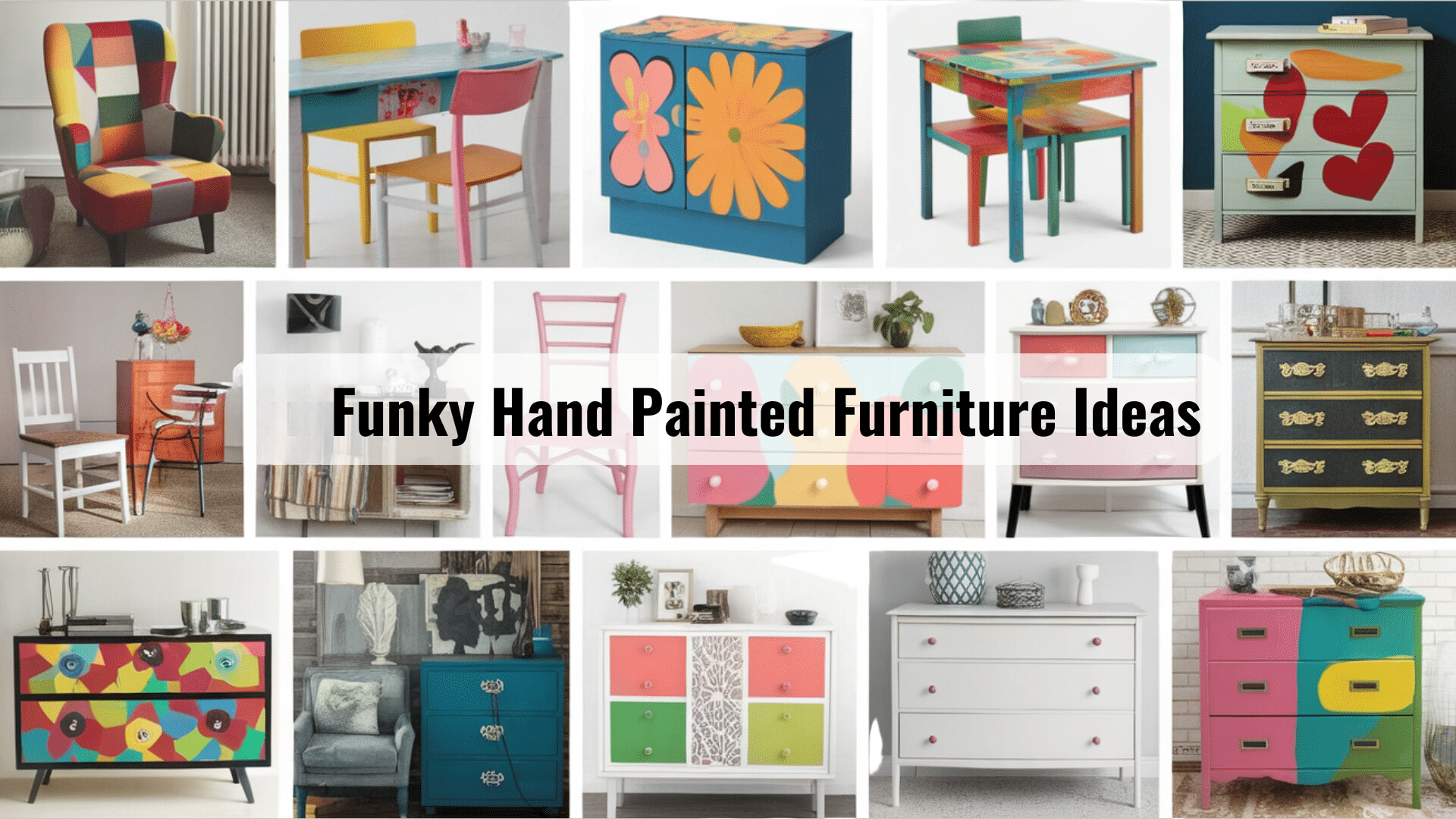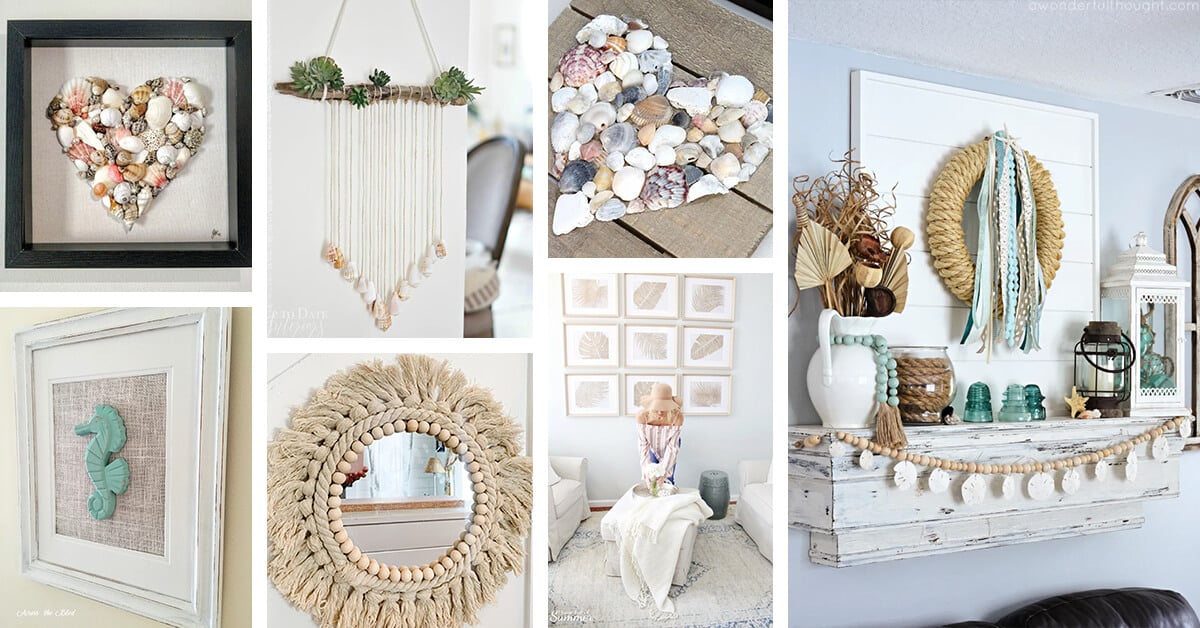Wood Interior Design: Bring Nature Into Your Home
Are you planning to add wood interior design to your house?
Wood adds a special touch to homes that never goes out of style. It brings warmth and a natural feel that makes any room more inviting and cozy.
From floors to furniture, wood can completely transform the look and feel of your home.
The best part is that wood fits with any style—whether you prefer simple designs or a cozy, country look. Plus, wood is great for the environment and can last for many years.
In this post, we’ll show you different ways to use wood in your home to create spaces that you’ll love spending time in.
Key Elements of Wood Interior Design
Wood brings warmth and a natural look to home design.
It connects your indoor space with the beauty of the outdoors while adding quality that lasts.
1. Natural Wood Accents
\Wood brings the outdoors inside your home. Adding open wooden beams to your ceiling makes rooms feel bigger and more open.
Clean wood floors add warmth under your feet, while wood wall panels can make plain walls stand out.
Try mixing different types of wood in one room, like oak floors with walnut furniture. This mix adds depth to your space.
Small wood items like bowls or picture frames are an easy way to start adding wood to your home without making big changes.
These small touches can make a big impact on how a room feels.
2. Warm Color Palette
Woods come in many colors that can change how a room feels. Deep brown woods like mahogany make spaces feel cozy and safe.
Tan-colored woods like poplar work well in most rooms and match many styles. Woods with red hints, like cedar, add a touch of warmth.
If you want rooms to feel open and bright, try light woods such as ash, maple, or birch. These woods work well in small spaces or areas with less natural light.
Woods with very dark colors can make a bold statement and work best as single pieces in a room.
3. Textural Contrast
Wood looks best when paired with other materials. Try adding stone counters next to wood cabinets or metal lamp bases on wood tables.
These pairings make both materials look better. Smooth, shiny wood works well with soft fabrics like cotton or wool.
When you touch different items in your room, the change from hard to soft makes spaces more interesting.
Try putting wool rugs on wood floors or linen curtains near wood window frames.
Even within wood types, smooth, flat surfaces can be mixed with rough, bumpy ones to create more visual appeal.
4. Sustainable Materials
Using old barn wood or boards from torn-down buildings gives new life to materials that might be thrown away.
This reused wood often has marks and color changes that new wood doesn’t have. When buying new wood, look for labels showing that it came from well-managed forests.
Woods with FSC or PEFC marks mean trees were grown and cut in ways that benefit forests, not harm them.
Using wood from nearby areas means less fuel is used to bring it to you. Good wood choices also last for many years, meaning you won’t need to replace them soon.
Types of Wood in Interior Design
Wood can be used in many ways to create different looks for your home.
From country charm to modern style, wood fits into any design plan.
Rustic Wood Design
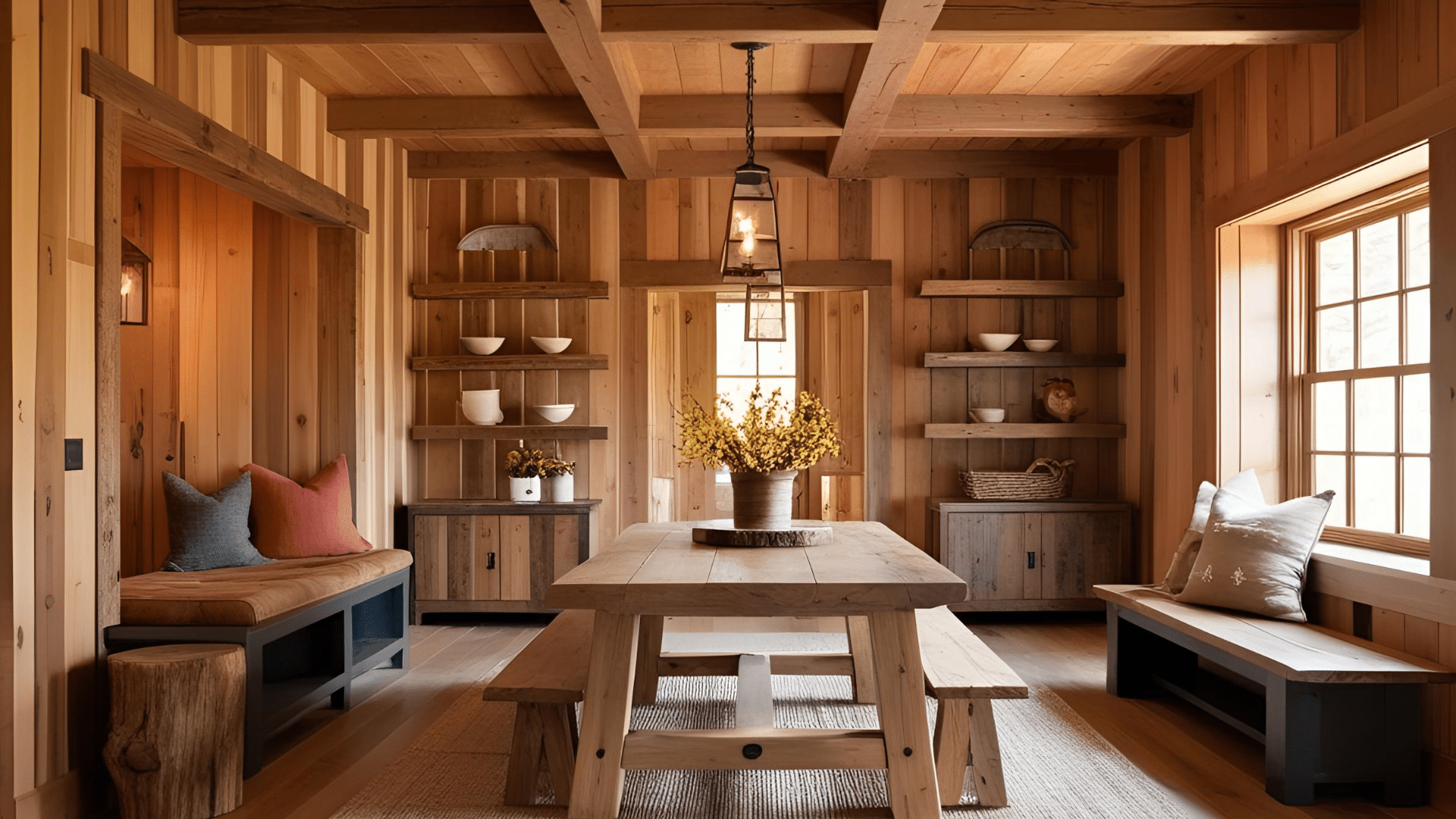
Rustic wood design makes your home feel warm and cozy. It uses wood that looks more natural and less finished.
You might see wooden tables with knots showing or shelves made from thick wood planks.
Ceiling beams left open add a country feel to any room. This style often uses natural colors, like browns, greens, and soft reds. Rustic rooms feel relaxed and comfortable.
The wood might look weathered or aged on purpose. This style works well in cabins, farmhouses, or any home where you want a laid-back, natural feel.
Scandinavian Wood Design
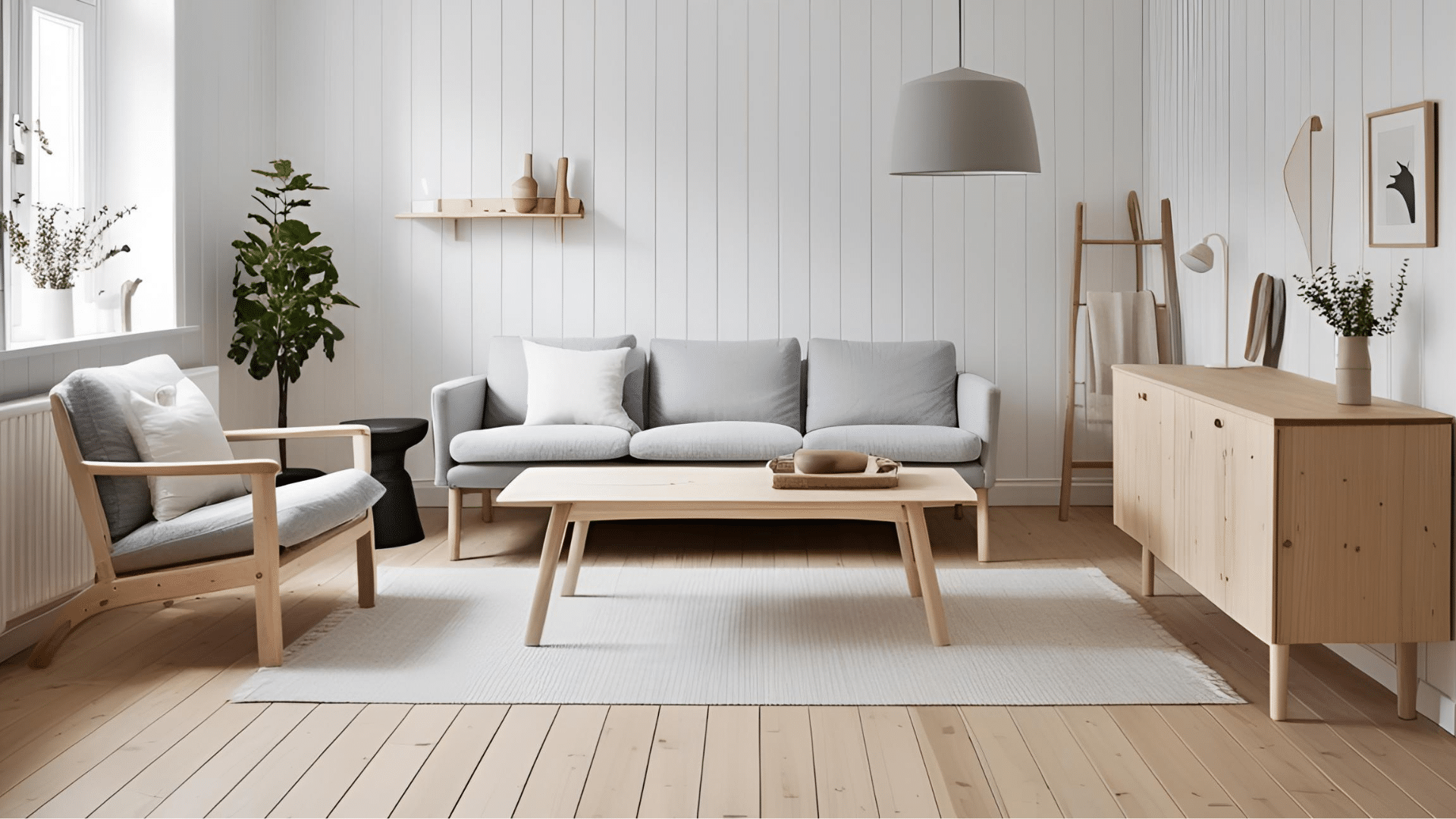
Scandinavian wood design keeps things simple and bright. This style comes from Nordic countries where winter days are short, so making the most of light is important.
You’ll see lots of white walls with light wood, such as birch or pine. Furniture has straight, clean shapes without fancy details.
Floors are often wood planks in light colors. This style avoids clutter, keeping only what’s needed and useful. Rooms feel open and calm.
Windows are usually left uncovered to let in as much sunlight as possible. This style creates peaceful, bright spaces that feel open and airy.
Modern Wood Design
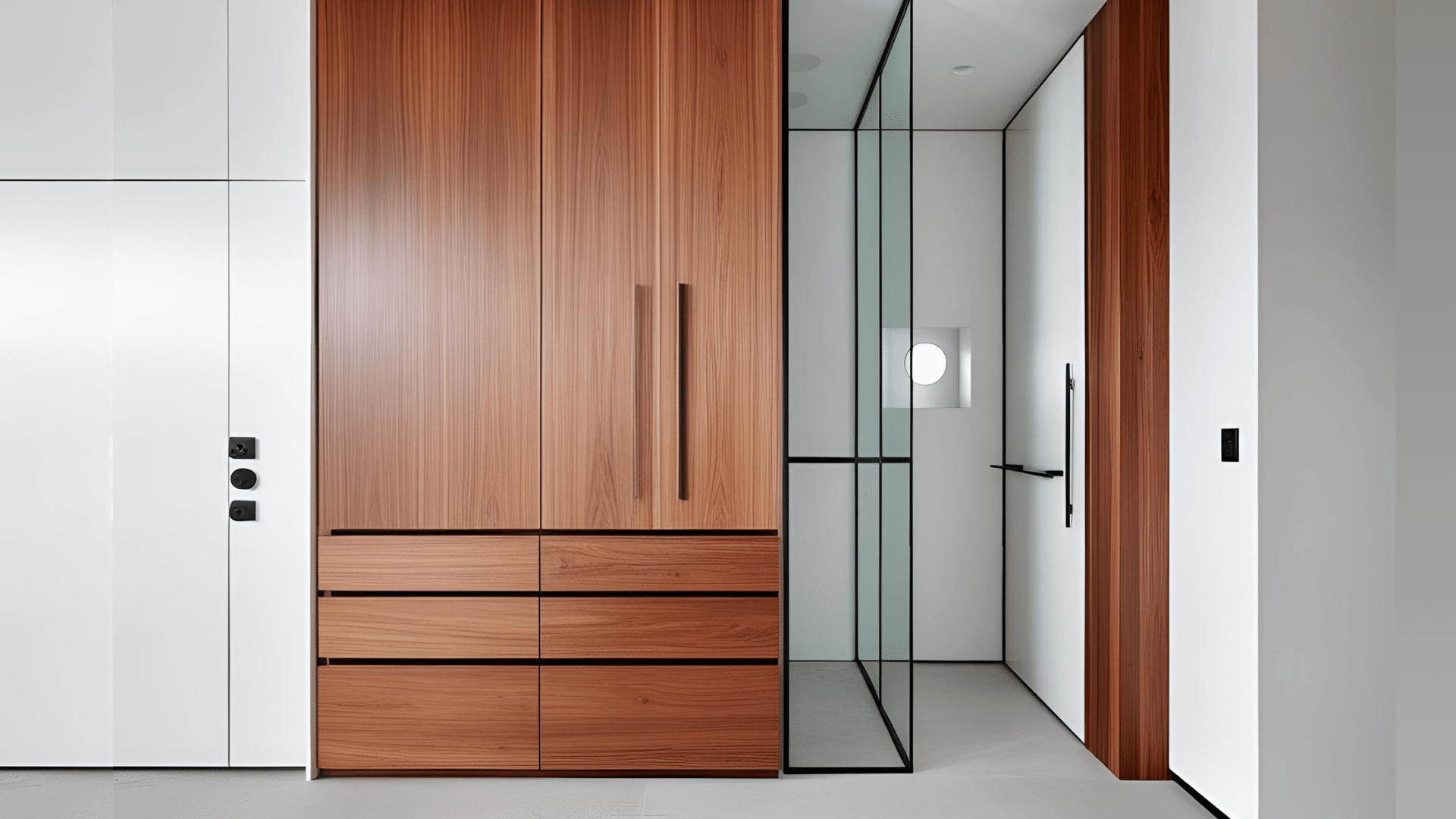
Modern wood design uses smooth, shiny wood in bold ways. This style mixes wood with glass, metal, or concrete to create strong differences between materials.
You might see a wooden wall panel next to a white wall or wood cabinets with metal handles. The wood often has a clear finish that shows its natural pattern.
Modern wood designs keep spaces open and use fewer pieces of furniture. The focus is on shape and function, not fancy details.
Lighting is important, with fixtures that show off the wood’s color and grain. This style feels clean, fresh, and up-to-date.
Traditional Wood Design
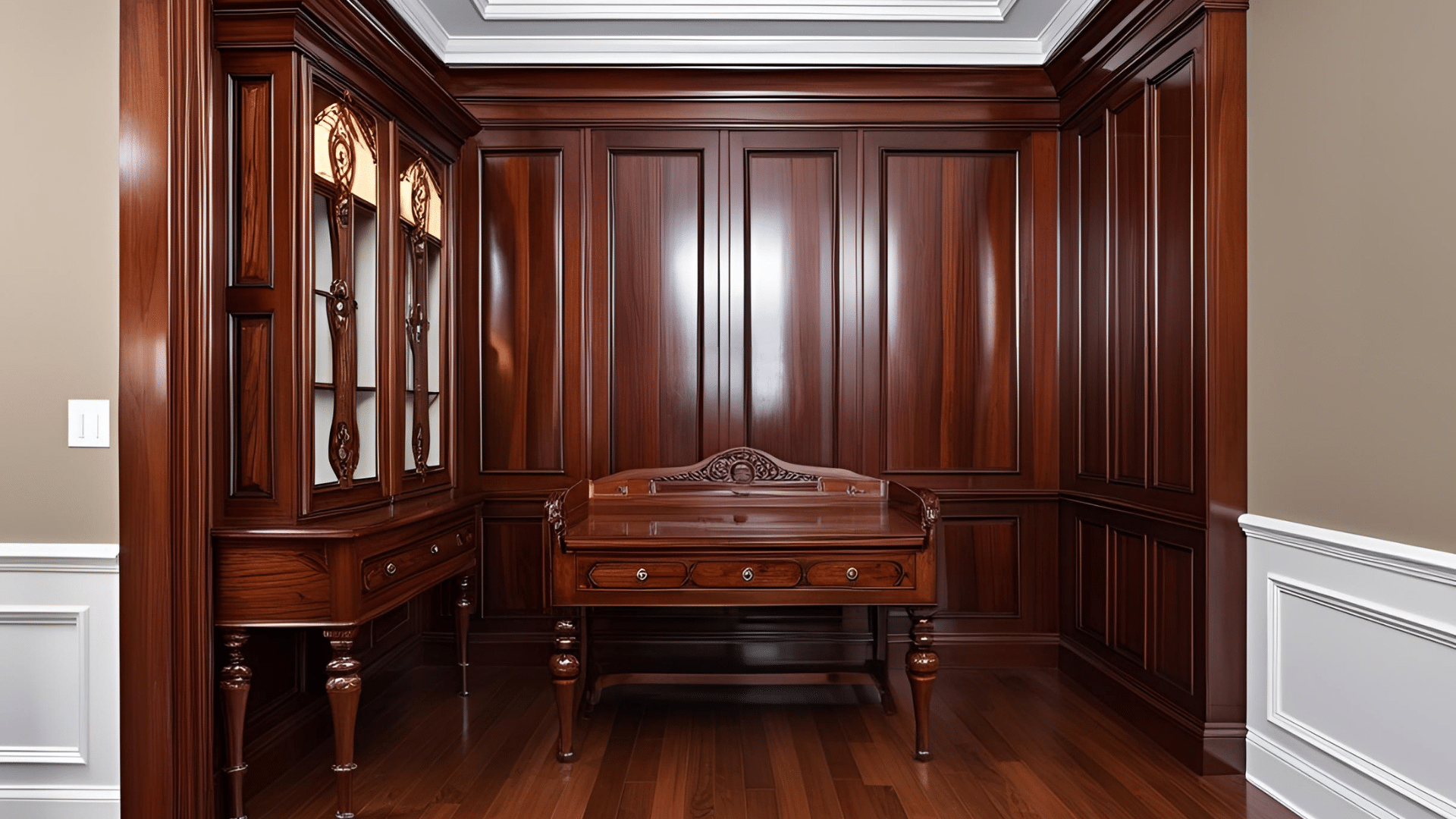
Traditional wood design uses darker woods with rich color. Furniture might have curved legs or detailed carvings.
Crown molding around ceilings and baseboards along floors adds formality. The wood often has a deep, shiny finish that looks polished.
Wooden doors might have panels or trim work. This style makes rooms feel proper and well-made. You might see wood with patterns created by fitting small pieces together.
Dining tables, chairs, and bedroom sets typically match. This style connects to older ways of building that valued handmade quality and attention to small details.
How to Incorporate Wood into Your Home
Adding wood to your home can be simple or bold.
From small wooden items to full wood walls, you have many options to bring warmth and natural beauty to your spaces.
Wooden Living Room Design
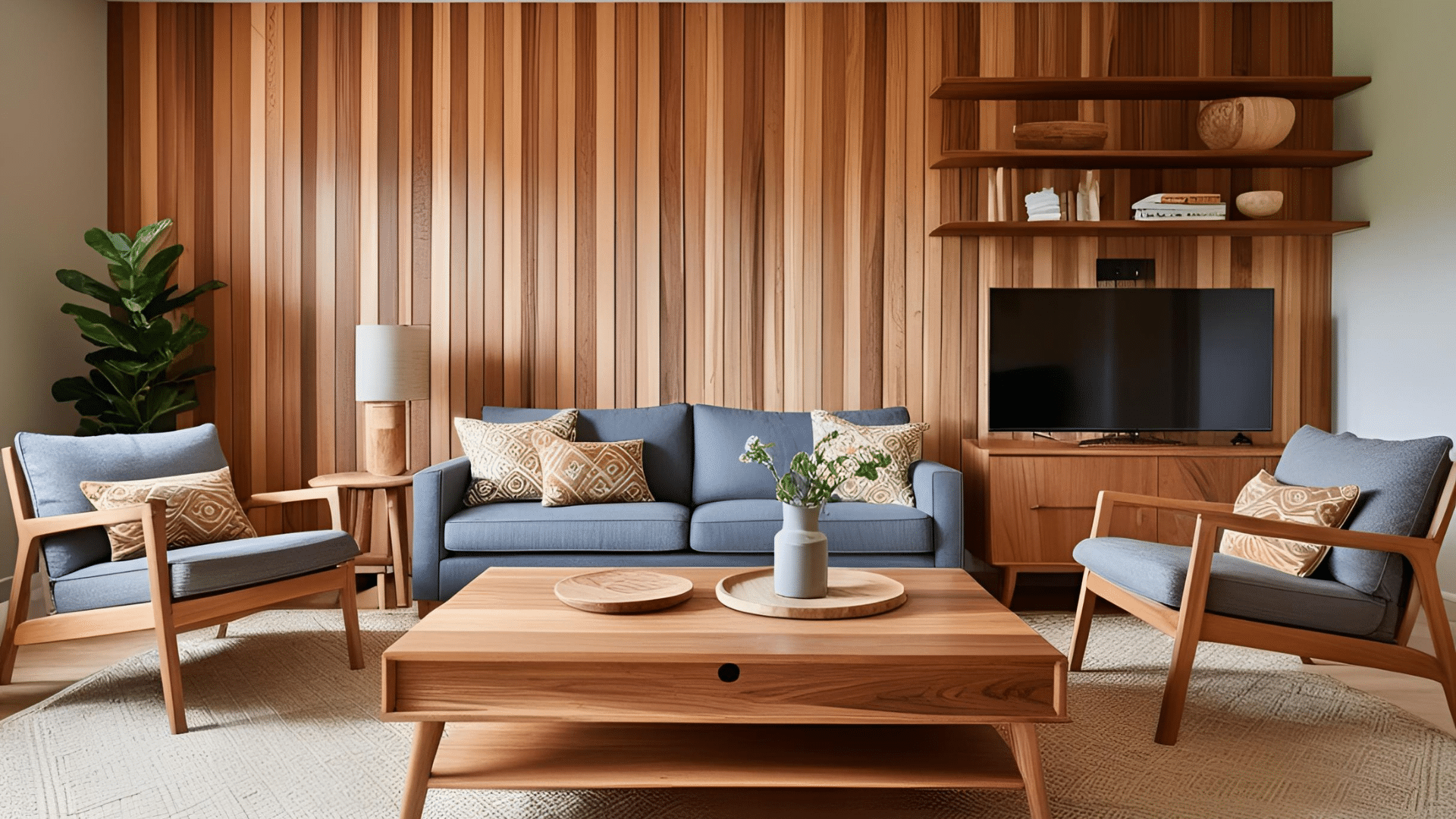
- Furniture: Wood coffee tables add a natural touch to any living room. For a complete look, mix in wooden shelves or TV stands. These pieces work well with fabric sofas and chairs.
- Accent Walls: A single wall with wood panels can change your whole room. It becomes the main point of interest without making the space feel too heavy.
- Floors: Wood floors in deep colors like cherry bring warmth. They hide dirt well and can handle high foot traffic while staying beautiful for years.
Wooden Bedroom Design
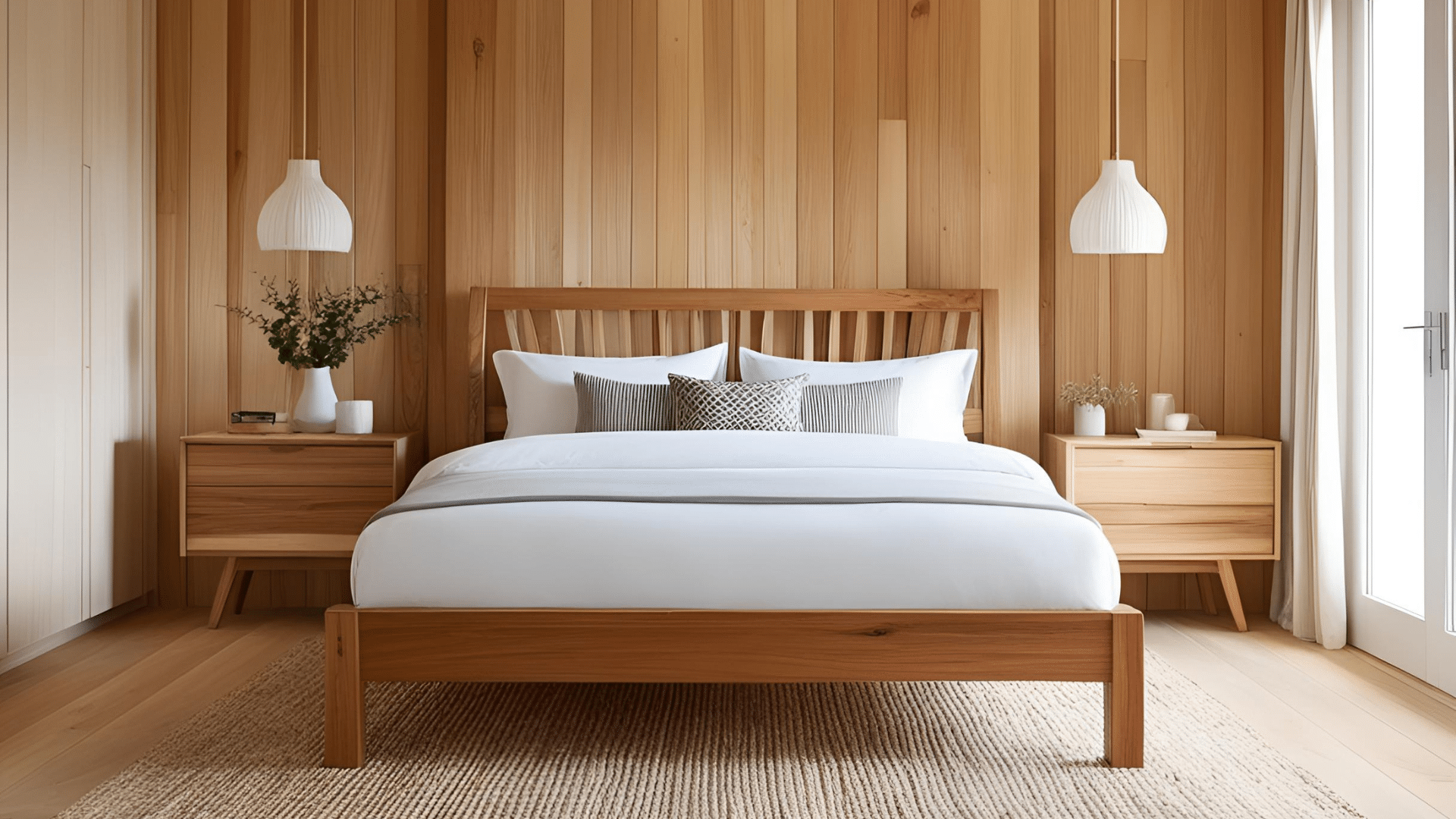
- Beds & Headboards: A wooden bed frame becomes the center of your bedroom. Look for solid wood options that will last many years. Even a simple wooden headboard can make a big impact.
- Wooden Floors: Light wood floors make bedrooms feel bigger and brighter. They stay cooler in the summer and add a calm feeling to your sleep space.
- Storage: Wooden dressers and night tables add function and style. They hold your things while making the room feel more put together and complete.
Wooden Kitchen Design
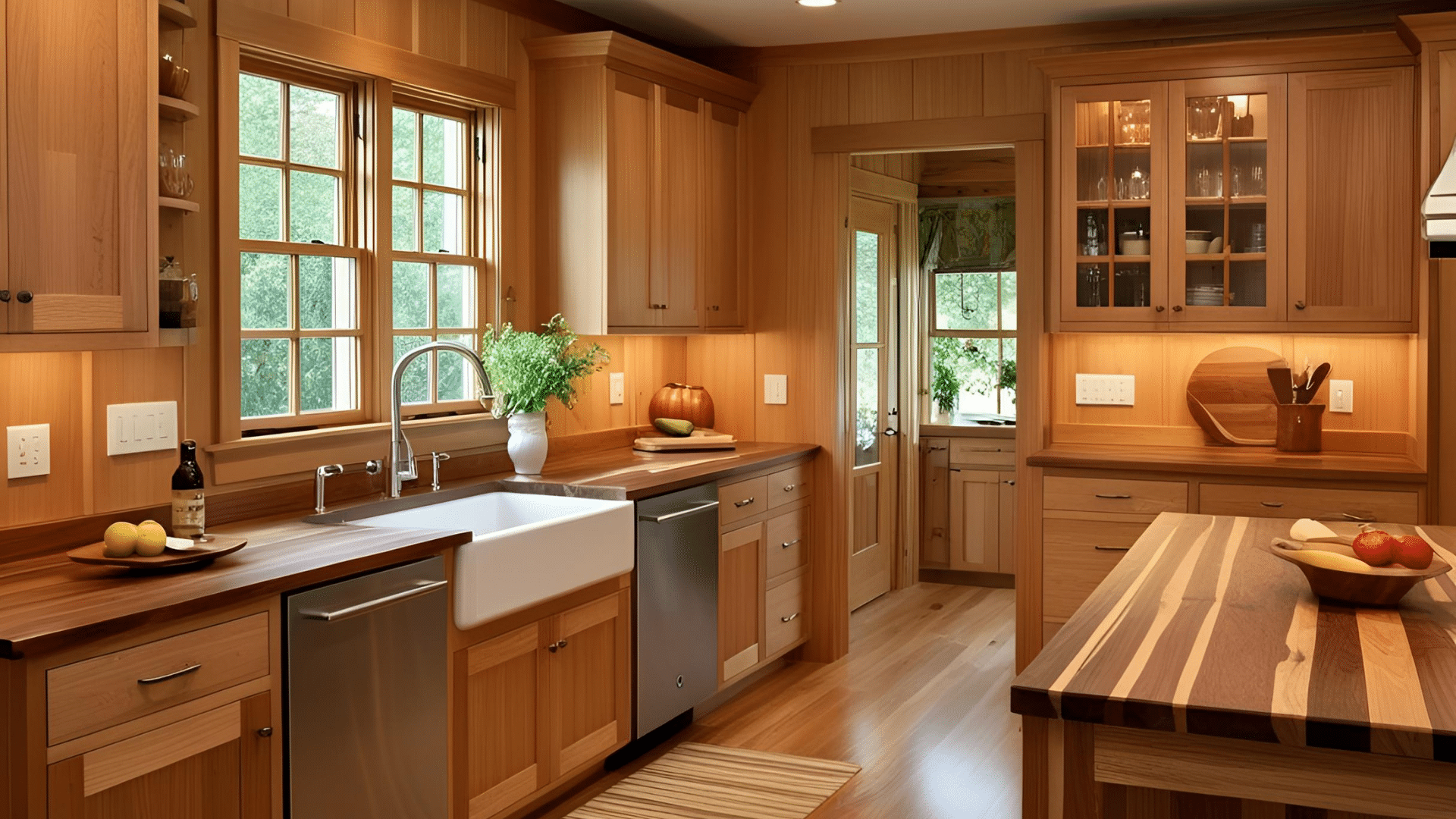
- Cabinets: Wood cabinets bring warmth to kitchens. Oak, maple, and cherry are good choices, as they withstand daily use and can be fixed if damaged.
- Countertops: Wood countertops, like butcher block, add a homey feeling. They need some care but get better-looking with age and use.
- Open Shelving: Wood shelves let you show off dishes and make items easy to grab. They cost less than cabinets and make small kitchens feel more open.
Wooden Bathroom Design

- Wood Accents: Small wood touches like mirror frames and toilet paper holders add warmth to cold bathroom surfaces. Choose woods that can handle moisture.
- Wooden Vanities: A wood sink stand grounds the bathroom. Teak and cedar work well because they naturally fight off water damage.
- Accessories: Simple wood items like bath caddies and step stools add a spa-like feeling. These small changes make a big difference without costing much.
Tips for Balancing Wood Interior Design
Mix Wood with Other Materials
Pair wooden tables with metal legs for a fresh look.
Glass doors on wood cabinets make spaces feel lighter, and stone counters next to wood cabinets create a nice contrast in kitchens.
Incorporate Light & Dark Woods
Use maple floors with walnut furniture to create visual interest.
A light wood dining table with darker chairs looks planned and thoughtful. This mix keeps rooms from feeling flat or boring.
Add Pops of Color
Blue pillows stand out nicely against brown wooden furniture.
Green plants bring life to wood-heavy spaces. A colorful rug under a wooden coffee table ties a room together without hiding the wood’s beauty.
Keep It Open
Leave space between wooden pieces so each one stands out. Choose a few key wood items rather than filling every corner.
Open wooden shelves let walls show through and keep rooms feeling spacious.
What to Avoid in Wood Interior Design
Overuse of Dark Woods
Dark wood in every part of a room can make it feel like a cave. Use dark woods for just one or two main pieces.
Mix in lighter woods or painted surfaces to keep the room feeling open and not too heavy.
Matching Everything
When all wood looks the same, rooms feel boring and planned. Mix oak chairs with a maple table or pine shelves with a walnut cabinet.
This mix looks more natural and interesting than when every wood piece matches perfectly.
Ignoring Lighting
Wood absorbs light instead of bouncing it back. In wood-heavy rooms, add more lamps and overhead lights.
Good lighting shows off the wood’s color and grain pattern. Without enough light, even beautiful wood pieces can look dull and flat.
Conclusion
Wood interior design brings nature into your home, creating spaces that are warm and comfortable.
Whether you prefer country styles, simple modern looks, or classic designs, wood improves any room.
The key is to find the right balance—mixing wood with other materials, using different wood tones, and ensuring there is enough light.
By adding wood in thoughtful ways and not overdoing it, you can transform your home into a calm and peaceful place.
Wood has remained a popular design choice because it connects us to nature while being durable enough to last for many years.
For more such blogs, check out our website!


